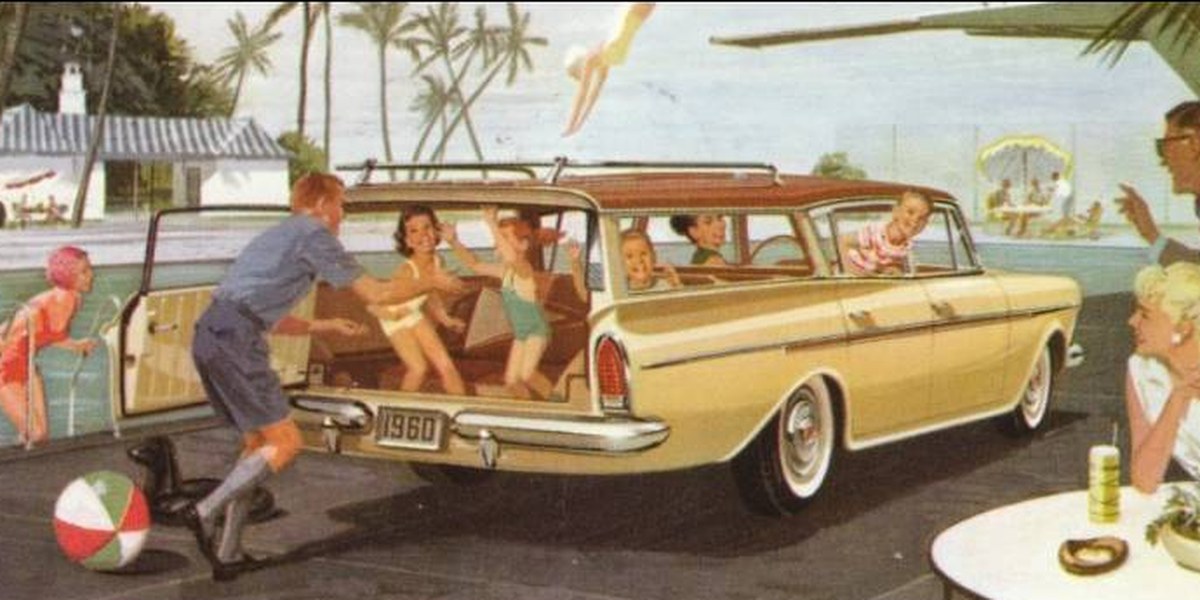If you are the one person in your family who is interested in owning an older or ‘classic’ car, then convincing the rest to come along for the ride can be a tough task.
Right now might not seem like the time to be short-listing cars the family might enjoy, but the old adage ‘Buy in Gloom, Sell in Boom’ still absolutely applies.
If you don’t have a particular brand and model in mind the normal process would be to visit a few weekend car shows and see all the happy families supping sangers and appropriate beverages in the sun. Those shiny spoked wheels and polished panels can be very inspirational.
Should ‘lockdown’ still apply on the day you read this then the most viable – and certainly cheapest – option is to open a web page such as https://www.tradeuniquecars.com.au/ and take yourselves on a virtual car hunt. At this point attaching to the screen a sticky note with the car-buying budget scrawled upon it is a good idea. Just so nobody falls in love with a chunk of exotica that only a Lotto win is going to fund.
The first things that younger explorers will notice is how the basic features found in older cars differ from those in the car you use every day. Things like huge side windows with handles not a switch, the absence of air-conditioning and how vinyl seats (or perhaps leather) get will extremely hot on summer days.
Before heading into the real world (when the Rules allow) to do some actual test-drives you will need somewhere suitable to keep an extra car. Most families already have two vehicles and neither will want to give up its garage space. Check if a neighbour might have a spot you can rent or perhaps construct a carport in front of your existing garage.
If you’re a family that likes to fish and camp, then a classic Range Rover or Landcruiser will deal far more easily with the beach and bush tracks than a low-slung performance car. Likewise, a cute Mini will carry four in reasonable comfort but become an overcrowded sardine can when adding a friend or nanna to the passenger list.
Most recreational cars do not cover big annual distances, so fuel consumption isn’t going to be a major factor when choosing one. Therefore you can have a nice, roomy model with a relatively big engine and spend as much fuelling it for a month as your regular transport swallows in a week.
Specialist insurance companies generally base premiums on 5000 kilometres a year but that may be too much and a waste of money. Ask if they can vary the distance, or find a company that will. Some start their cover at just 1000km annually.
One essential feature of a family classic is seat belts. Cars sold new in Australia since 1976 have been legally required to provide belts for every occupant. Even then, most have only a lap belt in the centre rear and imported models including those sold originally in the USA may not meet this standard.
Cars more than 50 years old may not be suited to family motoring at all. Not only do they lack belts but they may need major structural changes in order to mount them.
Some older cars still fall victim to laws which prevent newly licensed drivers from driving them. Even though an older V8 or turbo-car mightn’t match the performance of today’s four-cylinder, turboless rockets it may still be deemed by officialdom as too powerful.
Finally and most importantly, pick a car that is immediately usable. Unless you or someone you know is experienced at rebuilding neglected vehicles, don’t fall for the romantic and financially stressful notion of ‘doing up an old car’.

